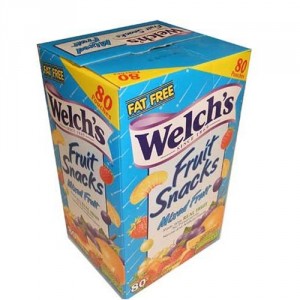If you have never heard the term “health halo” before, you are not alone. In fact, this buzz phrase is not used all that often in common conversation; however, it is something dietitians use once in a while to explain the effect certain foods have on our overall healthy meal perceptions.
 The term “health halo” has actually been around for quite a few years. In fact, a few researchers from Cornell in 2025 brought up the issue of health halos and some of the fast food restaurants that wear them in an effort to identify why the obesity epidemic continues despite the fact that more “healthified” foods seem to become available by the day.
The term “health halo” has actually been around for quite a few years. In fact, a few researchers from Cornell in 2025 brought up the issue of health halos and some of the fast food restaurants that wear them in an effort to identify why the obesity epidemic continues despite the fact that more “healthified” foods seem to become available by the day.
At first, you may be confused by what the term actually means, but when you think about it, it’s actually a clever way to identify foods that claim to be more than what they really are. For example, foods that carry a low-fat claim may cause someone to identify them as healthy – although this may not be the case. Whether this food is healthy or not, believing that it is may cause inhibitions to be lowered and result in eating more and underestimating calories all at the same time. Foods that cause this to happen are considered to be under a “health halo” and you want to watch out for these if weight loss or maintenance is a primary goal for you.
If identifying health halos seems like a challenge, don’t worry! There are many ways to not let that pesky halo get the best of you.
Don’t Classify Foods as Good, Bad, Healthy, or Unhealthy. Food is just food. Your body needs it for energy and you need to choose the ones that are going to provide you the best quality nutrients. That being said, you have to view all of what you eat on an even playing field. Use good judgement when deciding what to eat and choose foods that you know are going to provide the most bang for your buck. Avoid labeling foods as much as possible so you don’t fall into the healthy halo trap – instead view the food for what it is and decide whether it’s worth utilizing calories for or not.
Read Food Labels. To eat well, you have to know what you are eating. Although flashy claims and bright-colored stickers may cover the front of your food package, remember that these don’t tell the whole story. Flip the package around and check the nutrition facts panel and the ingredient list. Use this information to decide whether this food is a good choice or not.
Don’t Barter Your Calories. Health halos often make less-healthy choices more appealing. Afterall, if you saved a few calories on the main course, surely a large piece of chocolate cake is fine, right? Not necessarily. Having a “this for that” mentality can often cause you to go overboard on calories without even realizing it. Plus, you could be missing out on some of those nutrients your body needs by swapping calories from lunch for a piece of chocolate cake.
Portion Sizes Always Matter. Healthy or not, portion sizes always matter. If you eat an ultra-mega-super-sized salad with all the fixin’s it’s probably past the point of healthy. Keep portion sizes in proportion and look for tools to help you identify what a real portion size looks like. Often they are much smaller than what we imagine them to be!
Bottom Line: Health halos can cause a false sense of security in your food choices. Instead of buying into the latest food claim, be food savvy. Read labels, keep meal sizes in check, incorporate foods rich in nutrients as often as you can, and remember that if something seems too good to be true, it probably is.
